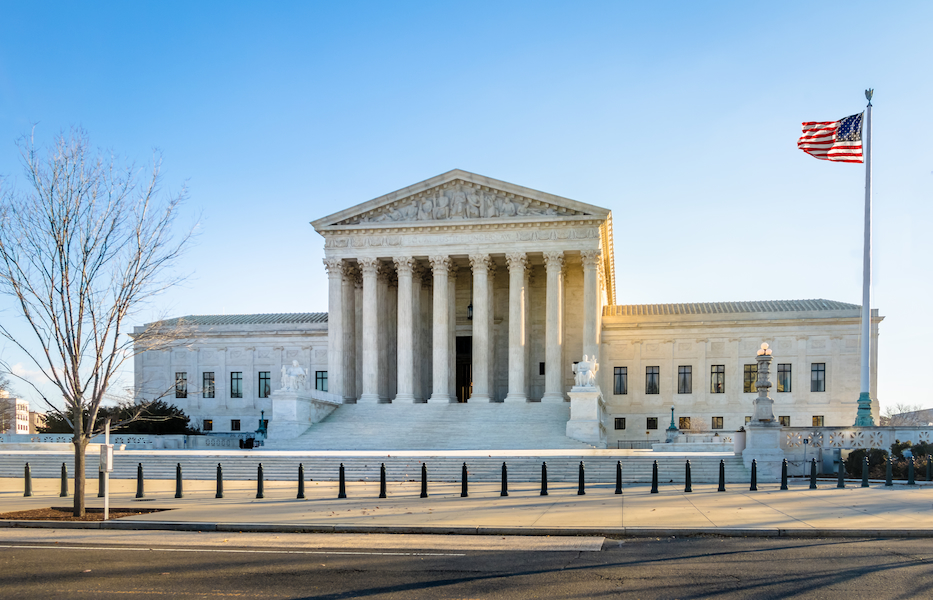Supreme Court Strikes Down NY COVID-19 Rule Restricting Attendance at Houses of Worship

The U.S. Supreme Court has enjoined an executive order issued by New York Governor Andrew Cuomo restricting attendance at churches and synagogues in areas designated as hard hit by the COVID-19 virus. According to the majority, the restrictions violated the First Amendment’s protection of free exercise of religion. The Court was divided 5-4 in Roman Catholic Diocese of Brooklyn v. Andrew M. Cuomo, 592 U. S. ____ (2020), with new justice Amy Coney Barrett siding with the majority.
Facts of the Case
Both applications sought relief from an Executive Order issued by the Governor of New York that imposes restrictions on attendance at religious services in areas classified as “red” or “orange” zones. In red zones, no more than 10 persons may attend each religious service, and in orange zones, attendance is capped at 25. The two applications, one filed by the Roman Catholic Diocese of Brooklyn and the other by Agudath Israel of America and affiliated entities, contend that these restrictions violate the Free Exercise Clause of the First Amendment, and they asked the Supreme Court to enjoin enforcement of the restrictions while they pursue appellate review.
Citing a variety of remarks made by the Governor, Agudath Israel argues that the Governor specifically targeted the Orthodox Jewish community and gerrymandered the boundaries of red and orange zones to ensure that heavily Orthodox areas were included. Both the Diocese and Agudath Israel maintain that the regulations treat houses of worship much more harshly than comparable secular facilities. The petitioners further maintain that they have complied with all public health guidance, have implemented additional precautionary measures, and have operated at 25% or 33% capacity for months without a single outbreak.
Supreme Court’s Decision
By a vote of 5-4, the Court enjoined enforcement of the occupancy restrictions on houses of worship.“Respondent is enjoined from enforcing Executive Order 202.68’s 10- and 25-person occupancy limits on applicant pending disposition of the appeal in the United States Court of Appeals for the Second Circuit and disposition of the petition for a writ of certiorari, if such writ is timely sought,” the Court held in a per curium opinion.
While the Court acknowledged that curbing the spread of COVID–19 is “unquestionably” a compelling interest, it further found it “hard to see” how the challenged regulations can be regarded as narrowly tailored. “Not only is there no evidence that the applicants have contributed to the spread of COVID-19 but there are many other less restrictive rules that could be adopted to minimize the risk to those attending religious services,” the Court wrote.
“Members of this Court are not public health experts, and we should respect the judgment of those with special expertise and responsibility in this area. But even in a pandemic, the Constitution cannot be put away and forgotten,” the majority added. “The restrictions at issue here, by effectively barring many from attending religious services, strike at the very heart of the First Amendment’s guarantee of religious liberty.”
Dissent
Chief Justice John Roberts authored a dissent, arguing that there was no need for the Court to rule given that neither petitioner was currently subject to restrictions.“None of the houses of worship identified in the applications is now subject to any fixed numerical restrictions,” the Chief Justice noted.“The Governor might reinstate the restrictions. But he also might not. And it is a significant matter to override determinations made by public health officials concerning what is necessary for public safety in the midst of a deadly pandemic,” he further wrote.
Justice Sonia Sotomayor also authored a dissent, which was joined by Justice Elena Kagan. Justice Sotomayor argued that New York’s restrictions are reasonable. “States may not discriminate against religious institutions, even when faced with a crisis as deadly as this one. But those principles are not at stake today,” justice Sotomayor wrote. “The Constitution does not forbid states from responding to public health crises through regulations that treat religious institutions equally or more favorably than comparable secular institutions, particularly when those regulations save lives. Because New York’s Covid-19 restrictions do just that, I respectfully dissent.”
Justice Sotomayor also noted the potential consequences of the majority’s decision: “Justices of this Court play a deadly game in second guessing the expert judgment of health officials about the environments in which a contagious virus, now infecting a million Americans each week, spreads most easily.” She further asserted that the majority’s decision “will only exacerbate the Nation’s suffering.”
Previous Articles
SCOTUS Wraps Up Oral Arguments for the Term
by DONALD SCARINCI on May 17, 2022
The U.S. Supreme Court has concluded its oral arguments for the October 2021 Term. The justices hea...
SCOTUS Rules Censure of Elected Board Member Didn’t Violate First Amendment
by DONALD SCARINCI on May 10, 2022
In Houston Community College System v. Wilson, 595 U.S. ____ (2022), the U.S. Supreme Court held th...
Supreme Court Breach Is Not the First Involving Roe v. Wade
by DONALD SCARINCI on
The recent disclosure of Justice Samuel Alito’s decision purporting to overturn Roe v. Wade is ar...
The Amendments
-
Amendment1
- Establishment ClauseFree Exercise Clause
- Freedom of Speech
- Freedoms of Press
- Freedom of Assembly, and Petitition
-
Amendment2
- The Right to Bear Arms
-
Amendment4
- Unreasonable Searches and Seizures
-
Amendment5
- Due Process
- Eminent Domain
- Rights of Criminal Defendants
Preamble to the Bill of Rights
Congress of the United States begun and held at the City of New-York, on Wednesday the fourth of March, one thousand seven hundred and eighty nine.
THE Conventions of a number of the States, having at the time of their adopting the Constitution, expressed a desire, in order to prevent misconstruction or abuse of its powers, that further declaratory and restrictive clauses should be added: And as extending the ground of public confidence in the Government, will best ensure the beneficent ends of its institution.




